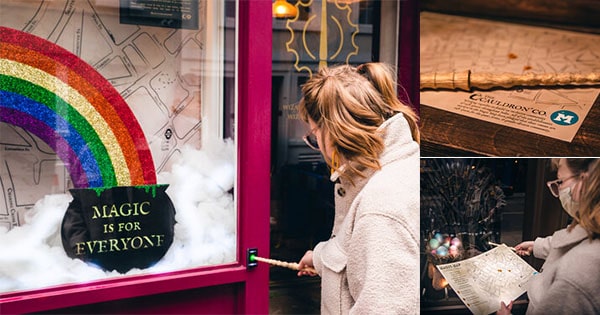Don’t tell everyone, but last week I sneaked off on a little holiday down the coast and while I was there I went to spend a day in Laugharne. The small town is best known for being home to Dylan Thomas but less well known is its connection to Richard Hughes (A High Wind in Jamaica).
Laugharne is steeped in history, and was well before Thomas decided to reside there. It has a castle that dates back to the 1100s, laid siege by Cromwell in the 1600s but still standing in ruinous form today. The town also contains many fine examples of Georgian townhouses and is home to the Laugharne Corporation, the last surviving medieval corporation in the UK.
It is however, best known for being the home of Dylan Thomas and the town is scattered with landmarks connected to the author, from the boathouse, to his writing shed, the castle gazebo where he and Richard Hughes wrote together, the Dylan Thomas birthday walk, inspired by Poem in October, and his final resting place.
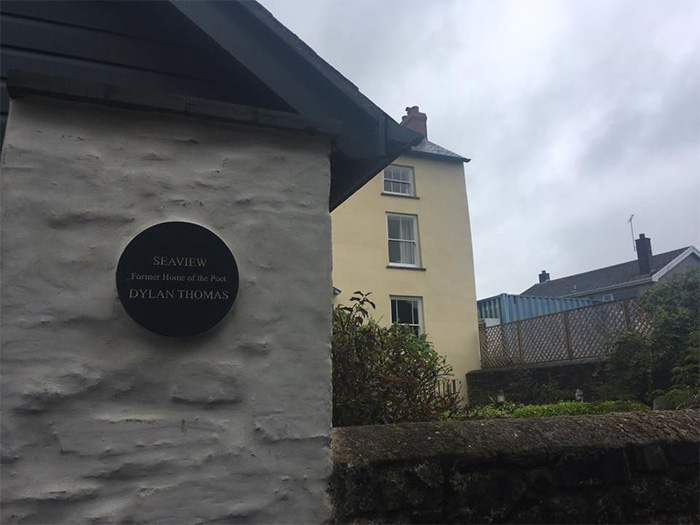
After wandering through the town our first stop was Seaview. This was Dylan’s first home in Laugharne, an imposing five bedroom townhouse that interestingly is currently for sale for a mere £600,000.
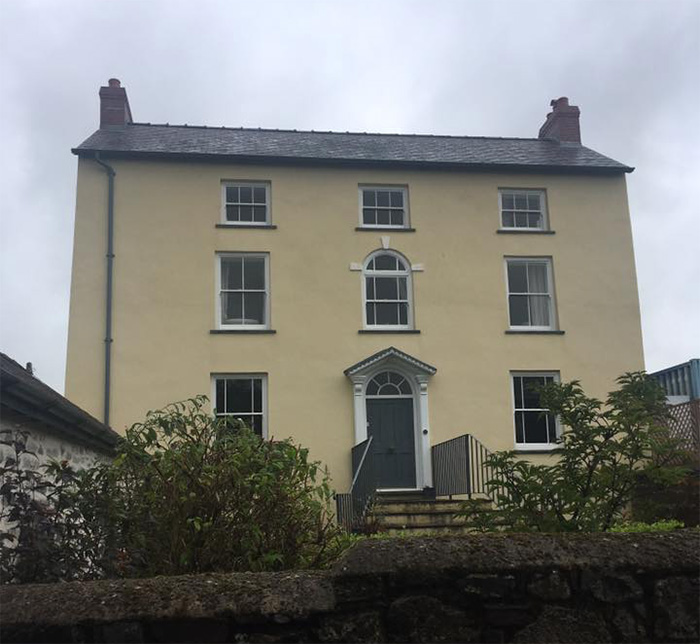
From here we wandered up the narrow lane, turning right towards the estuary and following the narrow path up to Dylan’s writing shed. It was a grey day but the view out over the estuary makes it easy to see why the place was such an inspiration to writers such as Dylan Thomas.
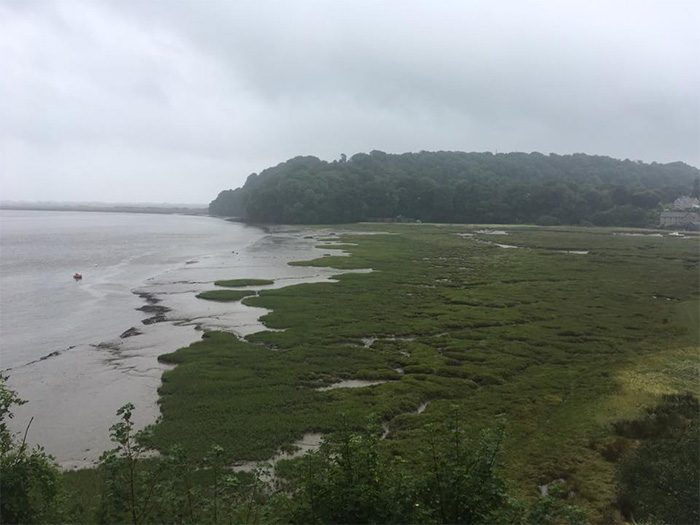
The writing shed is nothing but a free standing garage with a door cut into the double doors for easy entry. I’ve visited Laugharne several times and the simplicity of this tiny shed never fails to bowl me over.
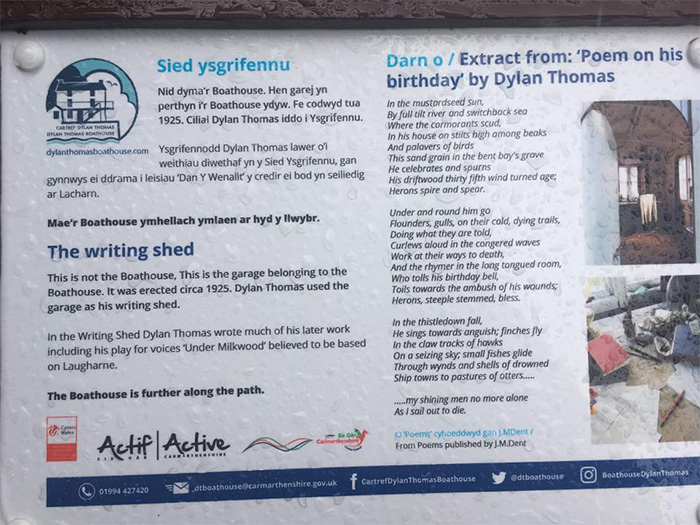
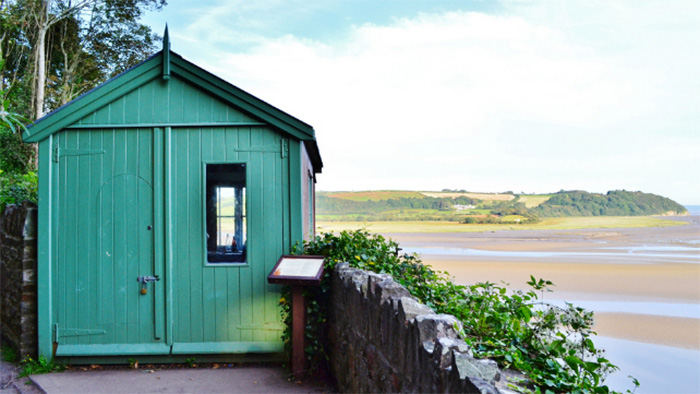
Due to the rain, it was almost impossible to get a picture through the glass of the door, so I have *ahem* borrowed this one from WalesOnline to give you a view of the interior. It’s said that Roald Dahl loved Dylan’s writing shed so much, it inspired him to create his own.
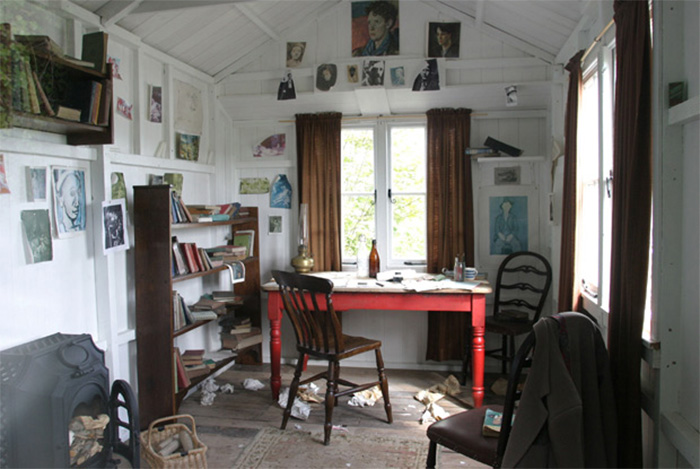
Another short walk up the hill and we come to the Boat House, home to Dylan and Caitlyn Thomas, the place they raised their family and the home most associated with the poet. It’s worth a visit, but there are steep steps down and if you wish to look around you’ll need to pay.
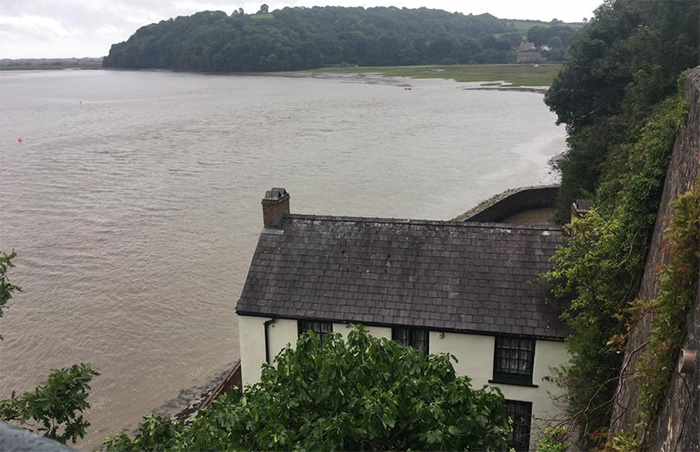
The Boat House got its name as originally it was a harbour where boats were moored, and although a wall has now been built and there is now a courtyard, it still fills with water at high tide. The courtyard as it now is is pictured below with stunning views from the Boat House across the estuary.
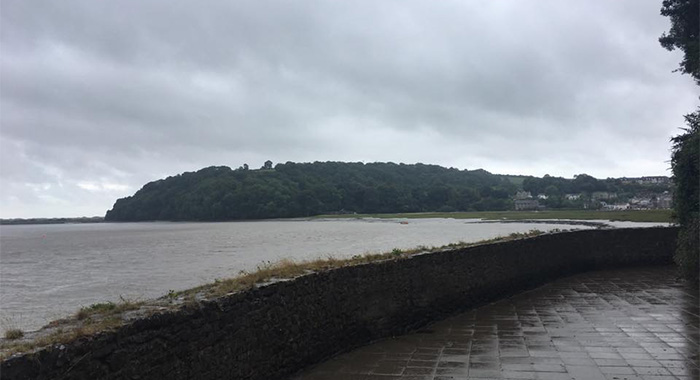
As we reached the top we found the signs for Dylan’s grave, you can access this along the main road from the town, or along the meandering dirt track we followed to the church. Along the way I chatted to a gentleman from Liverpool who had tried and failed to find Dylan’s grave. Visitors should be aware that it isn’t in the main churchyard but in the overflow field next door. The grave is central to the existing graves, about half way down the field and dead centre, marked by a simple white wooden cross.

As you can see in the long shot, it’s not a bad place to rest for eternity. Laugharne is beautifully picturesque.

Judging by the fresh flowers and the many pennies left on the cross, we can assume Dylan’s grave receives many visitors to this day.
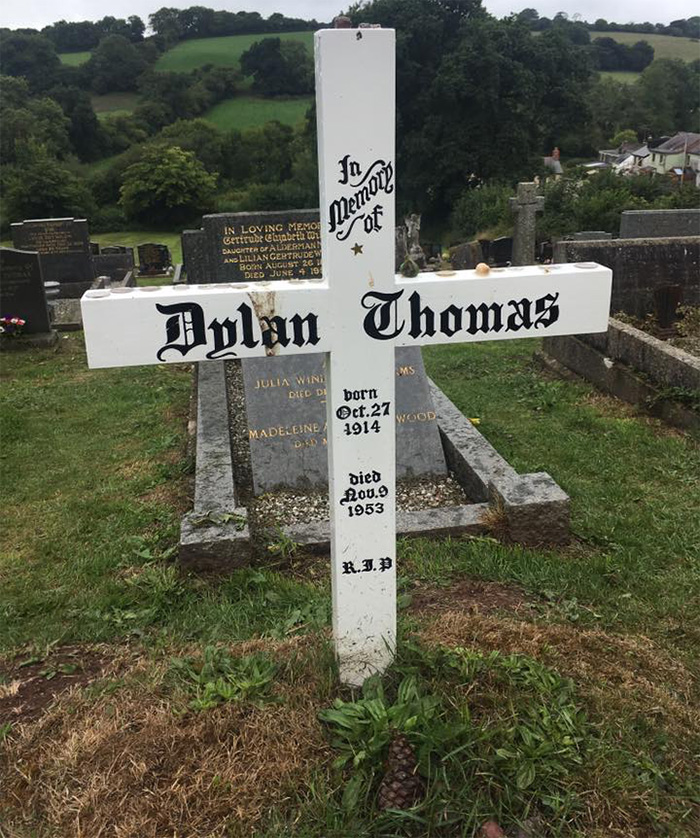
In 1994, forty-one years after the death of her husband, Caitlyn Thomas died. She rests in the same grave and her inscription is on the reverse of the cross.
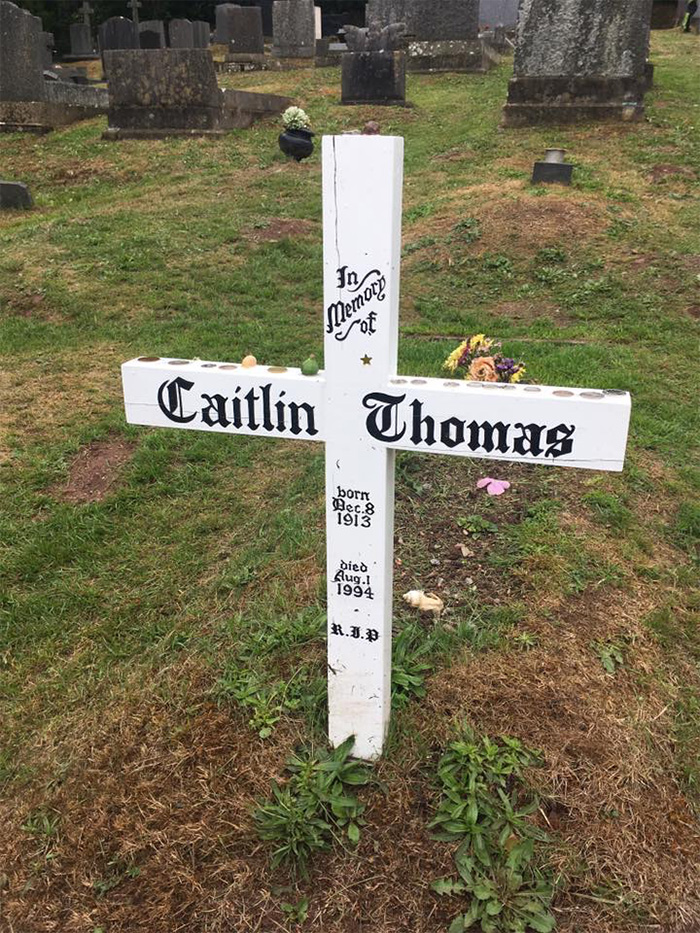
Rather than walk back along the dirt track, we left the graveyard from the bottom gate, turned left into Clifton Street and walked back towards the castle where the Dylan remembrance continues.
Like the Boat House, you must pay to enter the castle but it’s worth every penny. Originally built in the 1100s, Laugharne Castle has been rebuilt several times, most recently after Cromwell’s siege.
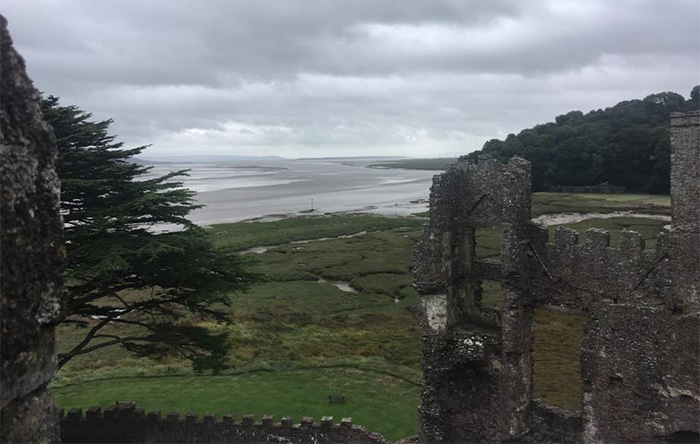
Just one tower survives well enough to be climbed, and while the views from the top are sensational, you’ll need to be fit and sure footed to make the climb up the narrow stairs.

The climb back down is pretty treacherous, the above picture was taking with full flash on and I was very glad for my daughter’s bright yellow raincoat to guide the way.

As we walked along inside the outer wall, we eventually came to the gazebo, added in the early 1800s it became a writing place for not only Dylan Thomas, but also Richard Hughes who regularly visited Laugharne to visit Thomas and use the gazebo as a writing retreat.
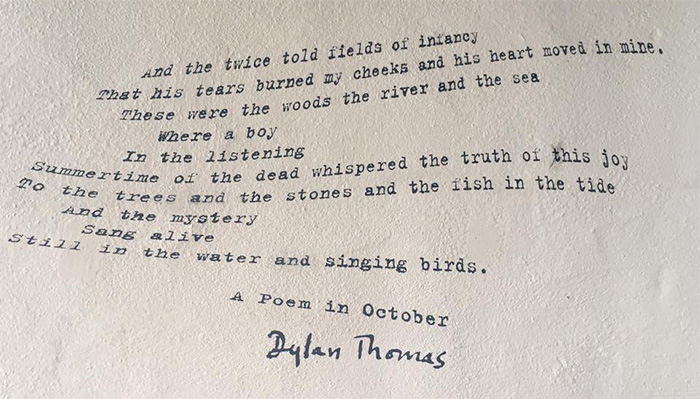
The room now stands as monument to both authors, filled with artefacts including Hughes’ typewriter.
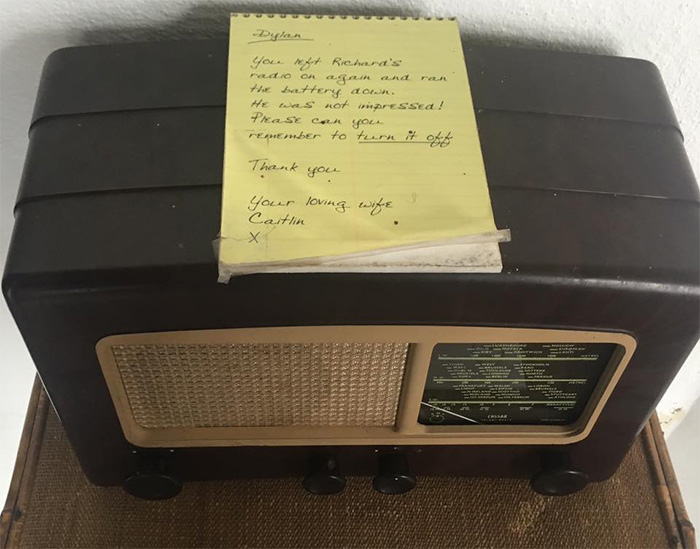
And the wireless radio the two shared, the typewriter it seems that Dylan often forgot to switch off.
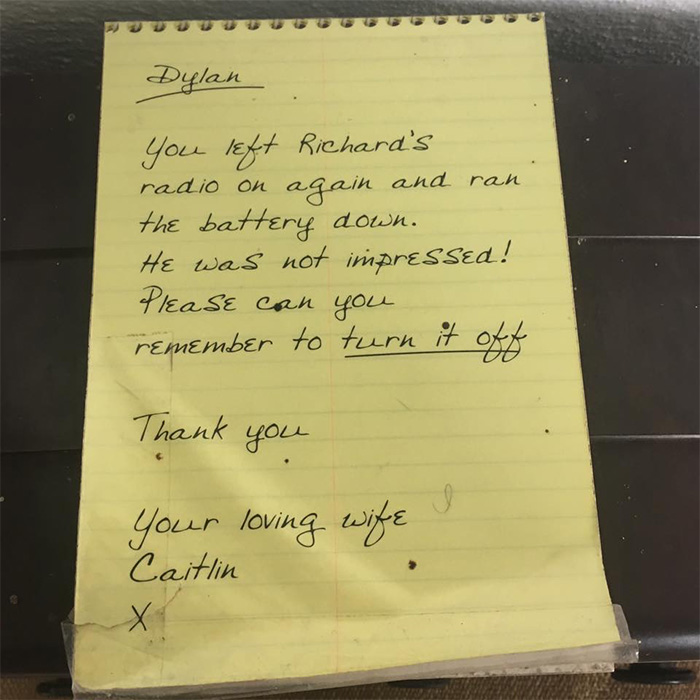
Laugharne is thought to be the basis for the fictional town of Llareggub, the fictional town from Under Milk Wood: A Play for Voices, and features heavily in Thomas’ poetry, and on the streets of the town you can almost hear his voice whispering through the years. I would advise anyone who is planning a visit to become familiar with Poem in October, (found in the Collected Poems) one of the most beautiful descriptions of Laugharne I have ever heard.

And that’s the end of our trip to Dylan’s Laugharne, but the town was steeped in history long before the poet arrived.
Laugharne Castle, or the Castle of Abercorran as it was known existed long before the Norman Conquest and belonged to the Princes of South Wales. The castle’s first documented mention is in 1172 when Henry II visited it on his return home from Ireland and made peace with Price Rhys of Dinefwr, Eventually his daughter Elizabeth inherited the castle, married Owen Laugharne of St Bride’s, giving the town and the castle the name it’s known as still today.
Possession of the castle eventually passed to the Crown and in 1644 was garrisoned for the king and taken for parliament, leading Cromwell to lay siege to the castle, leaving it in ruins.
Effects of history are still seen in the town today. As mentioned above, Laugharne still holds the Laugharne Corporation, a unique institution, which together with the City of London Corporation is the only surviving medieval corporation in the whole of the UK. The corporation was established in 1291 by Sir Guy de Brian, a Marcher Lord, it’s overseen by a Portreeve wearing a traditional chain of gold cockle shells, with one added by each portreeve.
The corporation holds a court-leet half yearly formerly dealing with criminal cases but now dealing with civil matters relating to land where the administration of the still common fields is dealt with. Many customs associated with the corporation still continue today, including the Common Walk, also known as beating the bounds. The event occurs on Whit Monday ever three years and is attended by most of the local population and many visitors too. The local pubs all open at 5am and bolstered by a liquid breakfast the throng commences a trek of some 25 miles along the entire boundary of all the corporations land. At significant historical landmarks a victim is selected and this victim must name the place, if they cannot they are hoisted upside down and ceremonially beaten three times on the rear. The corporation holds extensive historical records dating back more than 800 years, proving there is so much more to Laugharne than the wonderful drunken poet it’s best known for.
Laugharne is just one castle in the local area, there are three within just a few miles and many to visit along the Glamorganshire Coast, steeped with history and home to many stories, historical tales, and of course, Dylan Thomas himself.
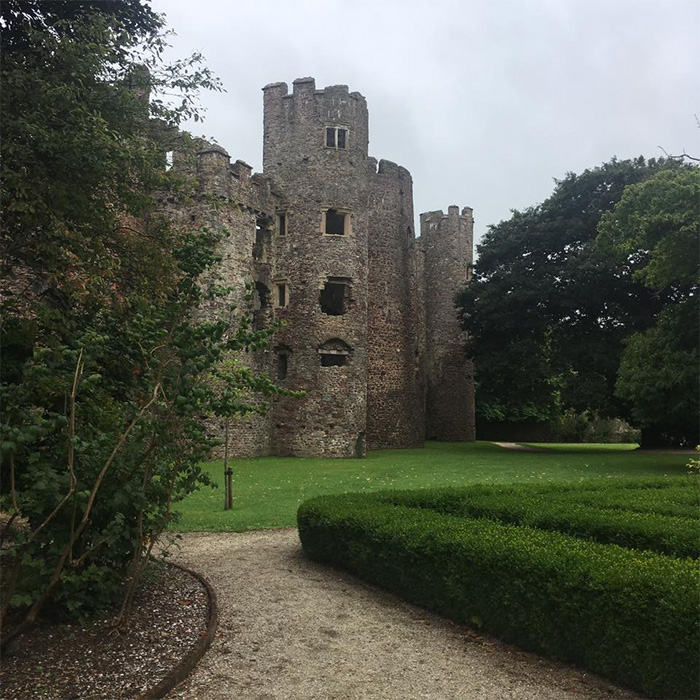
I don’t claim half the literary talent of Dylan Thomas, who by far offers the best literary descriptions of Laugharne ever written, but I hope you enjoyed this journey in words and pictures all the same.

Estonia Opens Museum of Banned Books

Stunning Lorna Doone moorland bought by National Trust
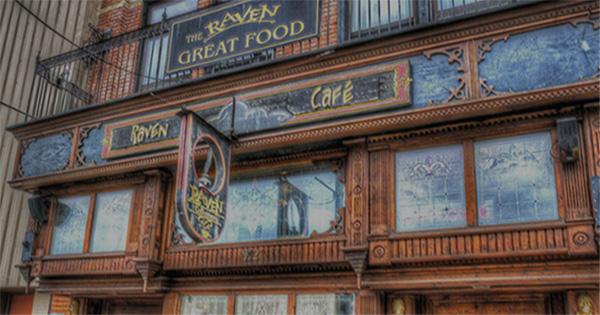
This Gothic Poe Themed Coffeehouse in Michigan is a Literary Dream
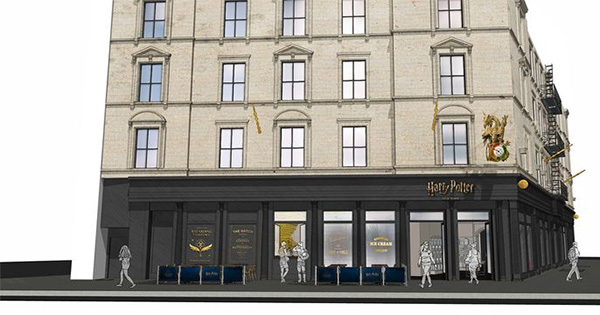
The Largest Ever Harry Potter Store is Opening in Manhattan and it’s Visible to Muggles!

Category Is Books: Scotland’s Only LGBTQ Bookstore

